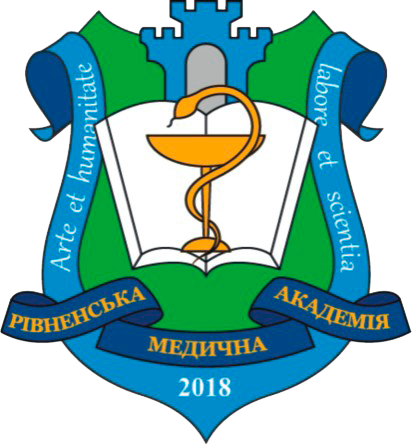PECULIARITIES OF MANAGEMENT OF PATIENTS WITH MANIFESTATIONS OF VOMITING IN PREGNANT WOMEN IN THE FIRST TRIMESTER WITH VITAMIN D DEFICIENCY AND А MAGNESIUM IMBALANCE
DOI:
https://doi.org/10.32782/health-2024.1.3Keywords:
pregnant women's vomiting, vitamin D, magnesium status, rating scale, cholecalceferolAbstract
The article presents the main aspects of the examination and care of patients with pregnancy vomiting in the first trimester of pregnancy. Pregnancy vomiting is one of the most important problems of maternal and child health care worldwide. Pregnancy vomiting does not tend to decrease and, according to various authors, ranges from 8.5 to 13.5%. A high percentage of this pathology is caused by stressful stimuli, liver dysfunction, with vomiting in pregnant women occurring three times more often, and an imbalance of trace elements, in particular magnesium (Mg), which has antistress activity: it reduces nervous system excitability, normalises sleep, calms, and plays a significant role in the immune response as a cofactor for the synthesis of immunoglobulins and other processes associated with T and B cell function. The article discusses the features of examination of patients with varying degrees of pregnancy vomiting. 60 patients were examined for the presence of a uterine singleton pregnancy of 4-12 weeks and signs of pregnancy vomiting. The severity of nausea and vomiting in pregnancy was assessed according to the modified PUQE-24 scale for assessing the severity of nausea and vomiting in pregnancy (20 women with mild vomiting, 26 patients with moderate vomiting, 14 women with severe vomiting). The control group consisted of 20 women with a physiological course of the first trimester of pregnancy. Mg deficiency was assessed according to an adapted standardised clinical scoring questionnaire used in international clinical practice. In women of the main group, Mg deficiency and insufficiency prevailed and only 21.7% of pregnant women were found to be free of Mg deficiency, while in pregnant women of the control group, Mg insufficiency was in 20.0% and Mg deficiency was observed in only 5.0% of cases; with increasing severity of vomiting in pregnant women, the frequency of Mg deficiency increases. Vitamin D insufficiency and deficiency are directly correlated with the severity of pregnancy vomiting. Initial vitamin D deficiency due to disorders that occur during pregnancy vomiting can increase during pregnancy and contribute to the development of gestational complications, which determines the need to correct vitamin D deficiency and insufficiency during pregnancy. Patients in group I were prescribed an aqueous solution of vitamin D3 for oral and magnesium preparations administration along with the standard treatment regimen for pregnant women's vomiting. After the proposed treatment regimen, 1 month after the start of treatment, the signs of vomiting in patients of group I significantly decreased and mild vomiting prevailed. The complex of the proposed therapeutic options with the use of cholecalciferol improved vitamin D and magnesium status in patients of the main group and makes it possible to prevent gestational complications.
References
Bustos M, Venkataramanan R, Caritis S. Nausea and vomiting of pregnancy – What's new?. Auton Neurosci. 2017;202:62–72. doi:10.1016/j.autneu.2016.05.002
Committee on Practice Bulletins-Obstetrics. ACOG Practice Bulletin No. 189: Nausea and Vomiting of Pregnancy. Obstet Gynecol. 2018;131(1):e15–e30. doi:10.1097/AOG.0000000000002456
Konkov DG. Vomiting of pregnant women. With Care Woman. 2016;2(68):26–9.
Einarson TR, Piwko C, Koren G. Quantifying the global rates of nausea and vomiting of pregnancy: a meta analysis. J Popul Ther Clin Pharmacol. 2013;20(2):e171–83.
Міщенко В.П., Руденко І.В., Запорожченко М.Б., Лавриненко Г.Л. Перебіг вагітності у жінок із дефіцитом вітаміну D. Збірник наукових праць Асоціації акушерів-гінекологів України. 2016. № 2(38). С. 301–304.
Пирогова В.І., Ошуркевич О.О., Охабська І.І. Вітамінно-мінеральні комплекси у профілактиці репродуктивних втрат та ускладнень вагітності. Здоровье женщины. 2019. № 1(137). С. 36–39.
Товстолиткіна Н.П. Вітамін D: чи все так просто, як здається? Здоровье женщины. 2018. № 10. С. 92–94.
Sabour, H., Hossein-Nezhad, A., Maghbooli, Z., et al. Relationship between pregnancy outcomes and maternal vitamin D and calcium intake: A cross-sectional study. Gynecol Endocrinol, 2008; 22 (10): P. 585–9. http://dx.doi.org/10.1080/09513590601005409.
Сенчук А.Я. Магній. Біологічна роль і застосування в акушерстві та гінекології : навчальний посібник. Київ : Фенікс, 2018. 104 с.
Fejzo MS, Macgibbon KW, Romero R, Goodwin TM, Mullin PM. Recurrence risk of hyperemesis gravidarum. Midwifery Womens Health. 2017;56 (2):32–41. https://doi.org/10.1111/j.1542-2011.2010.00019.x.
Ковалюк Т.В., Ластовецька Л.Д., Рамазанова Д.М. Взаємозв’язок трофологічного статусу вагітних та ступеня тяжкості раннього гестозу. Актуальні питання теоретичної та клінічної медицини Topical Issues of Theoretical and Clinical Medicine : збірник тез доповідей V Міжнародної науково-практичної конференції студентів та молодих вчених, м. Суми, 20–21 квітня 2017 р. Суми, 2017. С. 378–379.





